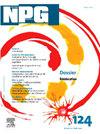Deciphering the molecular and neuropathological dimensions of dementia
Q4 Medicine
引用次数: 0
Abstract
Introduction
Dementia covers a complex spectrum of cognitive disorders characterized by various pathological mechanisms, significantly impacting individuals and society. Currently, over 55 million people are affected worldwide with the economic burden predicted to increase from $2.8 trillion in 2019 to $4.7 trillion by 2030. This paper explores the four predominant dementia types. These are Alzheimer's disease, Vascular dementia, Lewy body dementia, and Frontotemporal dementia. Each exclusive type has discrete etiologies, symptoms, and progression patterns.
Description
Alzheimer's disease, responsible for about 70% of demenetias worldwide, is closely linked to amyloid plaques and tau tangles, while vascular dementia is defined by reduced blood circulation to the brain and cognitive decline. Lewy body dementia is defined by aberrant deposits of alpha-synuclein protein, leading to cognitive fluctuations and visual hallucinations. Frontotemporal dementia is usually seen in younger people and is identified by atrophy of the frontal, prefrontal, and temporal cortex. Recognizing these differences is important for creating targeted interventions and treatments.
Conclusion
This review aims to enhance comprehension of the underlying pathologies, diagnostic challenges, and therapeutic strategies associated with these dementias, ultimately contributing to improved care and management for affected individuals.
解读痴呆的分子和神经病理维度
痴呆症是一种复杂的认知障碍,具有多种病理机制,对个人和社会都有重大影响。目前,全球有超过5500万人受到影响,预计到2030年,经济负担将从2019年的2.8万亿美元增加到4.7万亿美元。本文探讨了四种主要的痴呆类型。这些是阿尔茨海默病、血管性痴呆、路易体痴呆和额颞叶痴呆。每种类型都有不同的病因、症状和进展模式。阿尔茨海默病占全球痴呆症的70%,与淀粉样斑块和tau蛋白缠结密切相关,而血管性痴呆的定义是大脑血液循环减少和认知能力下降。路易体痴呆的定义是α -突触核蛋白的异常沉积,导致认知波动和视觉幻觉。额颞叶痴呆通常见于年轻人,通过额叶、前额叶和颞叶皮层的萎缩来识别。认识到这些差异对于制定有针对性的干预措施和治疗非常重要。结论:本综述旨在加强对这些痴呆相关的潜在病理、诊断挑战和治疗策略的理解,最终有助于改善患者的护理和管理。
本文章由计算机程序翻译,如有差异,请以英文原文为准。
求助全文
约1分钟内获得全文
求助全文
来源期刊

NPG Neurologie - Psychiatrie - Geriatrie
Medicine-Neurology (clinical)
CiteScore
0.60
自引率
0.00%
发文量
64
审稿时长
34 days
期刊介绍:
Aux confins de la neurologie, de la psychiatrie et de la gériatrie, NPG propose a tous les acteurs de la prise en charge du vieillissement cérébral normal et pathologique, des développements récents et adaptés a leur pratique clinique.
 求助内容:
求助内容: 应助结果提醒方式:
应助结果提醒方式:


